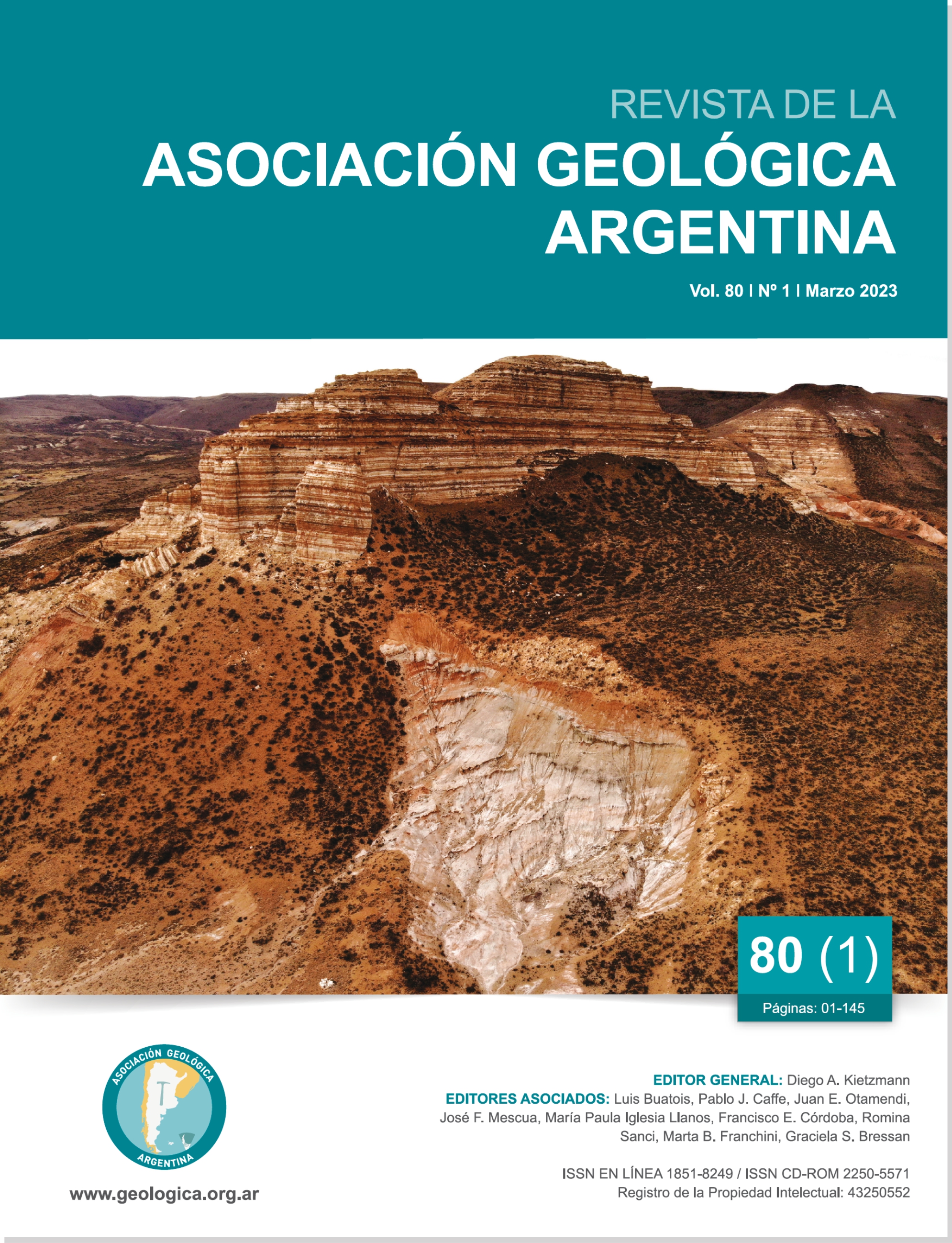Lithospheric structure in the Pampean flat-slab using inversion of receptor functions and dispersion curves in la Sierra de San Luis
Main Article Content
Abstract
At this work, we obtained Vs velocity models from the joint inversion of receptor functions (RF) and dispersion curves. To obtain the RF, we started from earthquakes of magnitudes greater than Mw 5.8 recorded by the UNSL broadband seismological station. We classified the receiver functions according to the azimuth of the earthquakes and separated them into two sectors. The classification was as rays cross relatively different areas of the crust, lithospheric and shallow sublithospheric structures. The main crustal and upper mantle discontinuities
below the station have a change in depth and velocity according to the azimuth of the ray. The
depth of the Mohorovicic discontinuity was the same on both sides (from 42 to 45 km), but not a discontinuity 20 km deep, which is present on the east side and could be attributed to a boundary between rheologically distinctive crusts and probably developed in different orogenic cycles. This study makes it possible to detect an important rheological change (10 km deep), which can be attributed to the detachment zone (decollement) related to the structuring of the uplift front of la Sierra de San Luis. It is important to note the decrease in wave speed between 60 and 100 km depth. This area would be linked to the development of an anomaly in the mantle that produced an arc volcanism associated with the flat subduction of the Nazca plate in the Andean foreland.
Article Details

This work is licensed under a Creative Commons Attribution-NonCommercial 4.0 International License.
Nota de copyright
Los autores conservan los derechos de autor y garantizan a la revista el derecho de ser la primera publicación del trabajo licenciado según una licencia de atribución Creative Commons que permite a otros compartir el trabajo con el reconocimiento de la autoría y de la publicación en la que se publicó por primera vez.
Declaración de privacidad
Los nombres y direcciones de correo electrónico introducidos en esta revista se usarán exclusivamente para los fines declarados por esta revista y no estarán disponibles para ningún otro propósito u otra persona.

